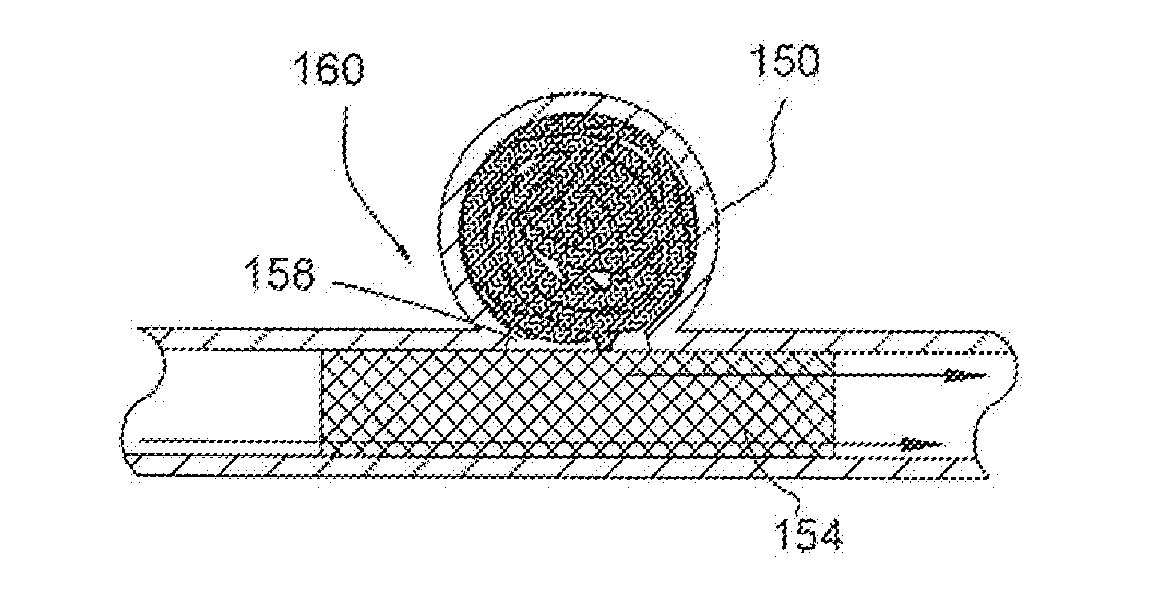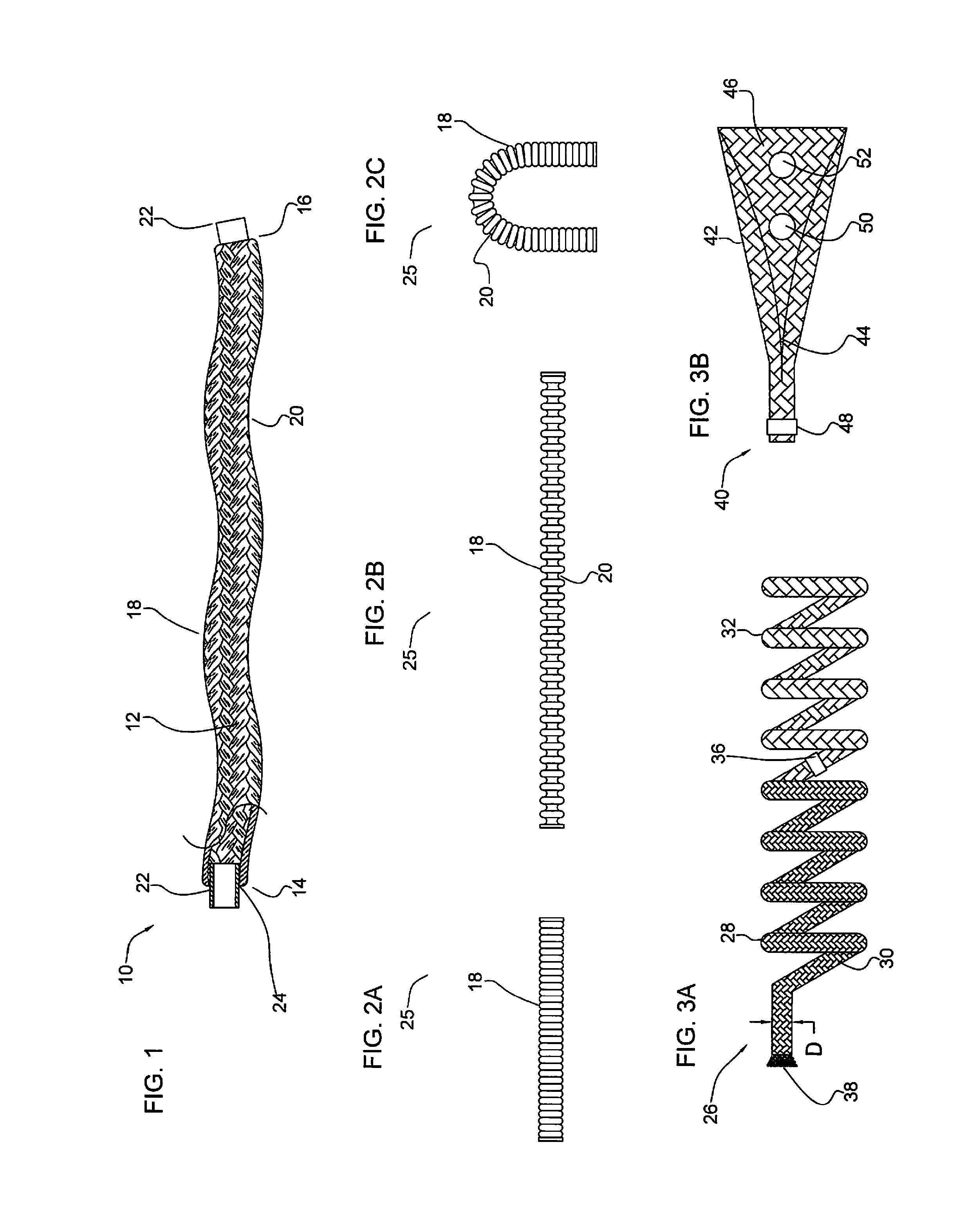Micrograft for the treatment of intracranial aneurysms and method for use
a micro-graft and intracranial aneurysm technology, applied in the field of medical devices, can solve the problems of stent-grafts not being a treatment option, stent-grafts being stiff, difficult to deliver/retract, etc., and achieve the effect of increasing the flexibility of the tubular structur
- Summary
- Abstract
- Description
- Claims
- Application Information
AI Technical Summary
Benefits of technology
Problems solved by technology
Method used
Image
Examples
Embodiment Construction
[0129]The following embodiments are described in sufficient detail to enable those skilled in the art to practice the invention, and it is understood that structural changes may be made without departing from the scope of the present invention. Therefore, the following detailed description is not to be taken in a limiting sense. Where possible, the same reference numbers are used throughout the drawings to refer to the same or like components or features.
[0130]FIG. 1 illustrates a partial cut away side view of an intra-aneurysmal micrograft for insertion into an intracranial aneurysm in accordance with one embodiment of the present invention. The micrograft of this embodiment, designated generally by reference number 10, includes a biocompatible non-self-expandable absorbent braided polymeric textile tubular body 12 that has been crimped to reduce stiffness and increase wall thickness and fabric density. The micrograft 10 has sufficient stiffness as well as sufficient flexibility to...
PUM
| Property | Measurement | Unit |
|---|---|---|
| outer diameter | aaaaa | aaaaa |
| inner diameter | aaaaa | aaaaa |
| length | aaaaa | aaaaa |
Abstract
Description
Claims
Application Information
 Login to View More
Login to View More - R&D
- Intellectual Property
- Life Sciences
- Materials
- Tech Scout
- Unparalleled Data Quality
- Higher Quality Content
- 60% Fewer Hallucinations
Browse by: Latest US Patents, China's latest patents, Technical Efficacy Thesaurus, Application Domain, Technology Topic, Popular Technical Reports.
© 2025 PatSnap. All rights reserved.Legal|Privacy policy|Modern Slavery Act Transparency Statement|Sitemap|About US| Contact US: help@patsnap.com



